Japan’s tectonic landscape reflected in the gardens
| Travel Reports by Chashitsu | view profile of Chashitsu |
| previous post |
|
| Note: The opinions and views expressed in this user report are those of the individual author and do not necessarily reflect the opinions and views of japan-guide.com. |
July 25, 2017 - Japan's tectonic landscape reflected in the gardens
This article takes a look at Japan's tectonic landscape and its effects of volcanic activity, earthquakes and tsunamis on shaping the landscape and how this is reflected in the gardens. Japan sits on the Pacific ring of fire with a triple convergence of four subducting tectonics plates 200-300 kilometres off the coast of Tokyo. Japan has 118 volcanoes trending NE-SW with 76 on the four main islands distributed with 20 in Hokkaido, 47 in Honshu and 9 in Kyushu with the remainder creating the offshore islands. It represents some 10% of the world's total. The principle ones are found in a band of island arcs running through Hokkaido (Mt Unzen & Mt )and down the spine of Honshu (Mt Zao, Mt Ontake & Mt Fuji) and through Kyushu (Mt Aso & Sukurajima) into the Ryukyu islands, bypassing Shikoku. Many of the volcanoes are strato-volcanoes with only slightly acidic, less violent eruptions forming conical structures with caldera lakes. - to see images refer to japan-guide .com site.
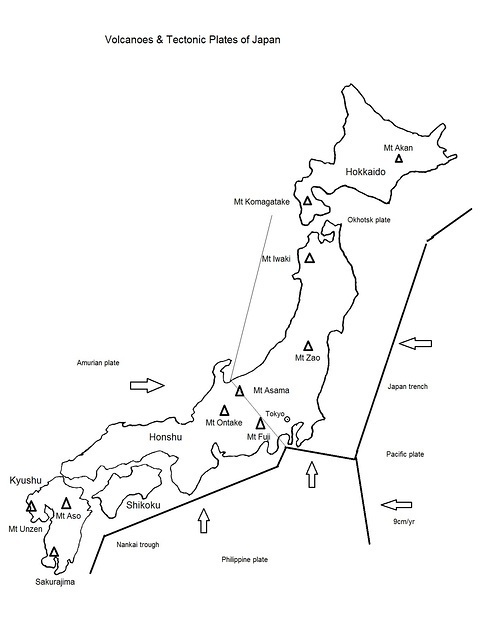
The subducting plate carries the sea floor under the opposing plate at an angle of 25-35? triggering earthquakes as it is subsumed at depths of 100 km and more until the plate is finally melts at around 700 km depth. The rising magma seeks faults in the overlying rocks to emerge creating the volcanoes. The movement of the plates one against the other causes earthquakes as the plates stick and slip at irregular intervals. When such movement takes at the sea bed, the column of water above the slip/slump moves out from the depths towards land at increasing amplitude as the coastal shallows are reached in the form of tsunamis.
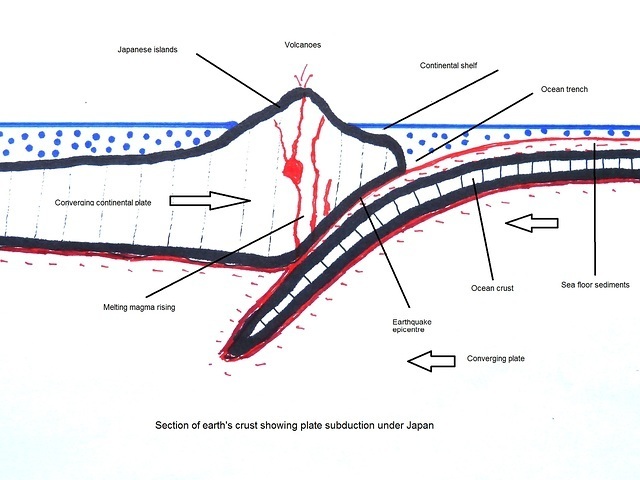
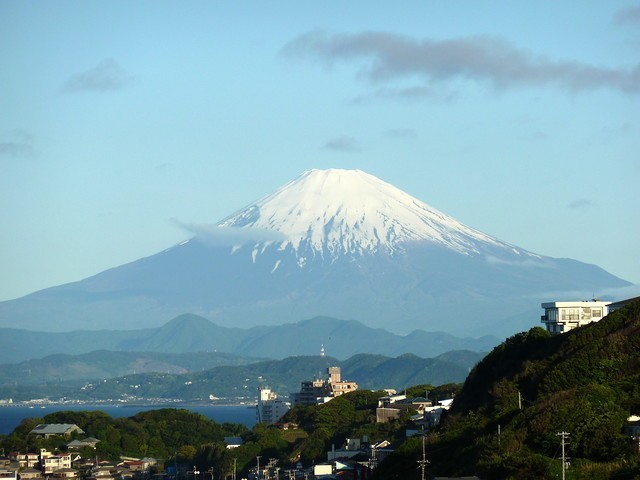
Earthquakes are a daily occurrence in Japan, with fairly frequent, more serious higher magnitude events. In 1923 the great Kanto earthquake caused massive devastation of Tokyo with over 100,000 deaths, the 1995 the great Hanshin earthquake caused serious damage and loss of life in Kobe of more than 6,000 deaths. On my last visit to Japan in April 2016 ,I landed to the news of the Kumamoto earthquake causing considerable damage to the castle and some disruption to my own plans. Earthquakes have two penetrating wave-fronts and surface waves, the primary (compressional) wave causing less damage than the secondary (transverse) waves. Surface waves are damaging with rolling motions and may cause liquefaction of sub-soils and collapse of buildings.
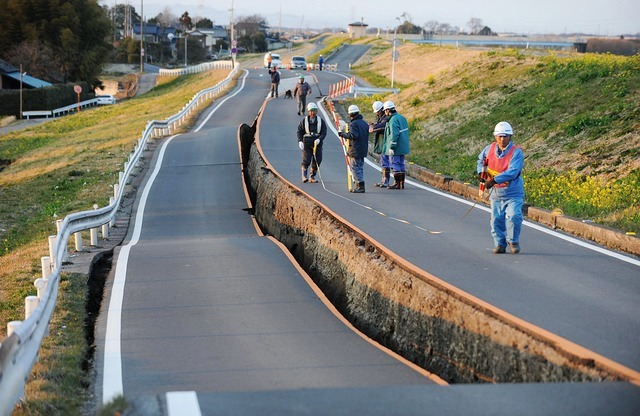
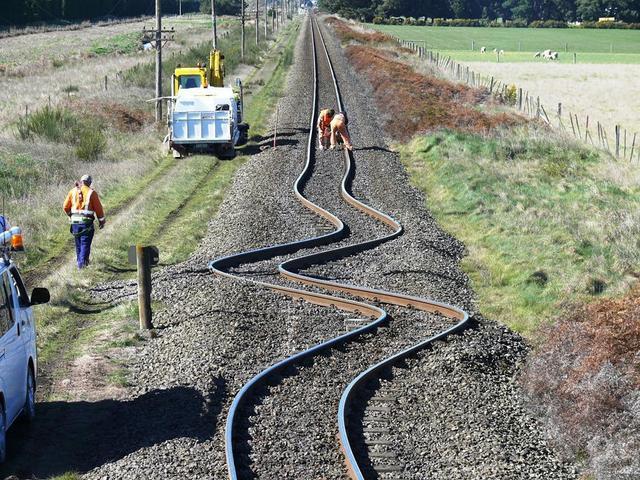
The design of the Japanese temple is highly earthquake resistant despite the heavy roof structures. The post and multiple lintel structures with pegged joints enable the structure to "rock and roll" with the motion of the earthquake. This can be seen in its simplest form in the bell tower of Kosho-ji temple in Uji.
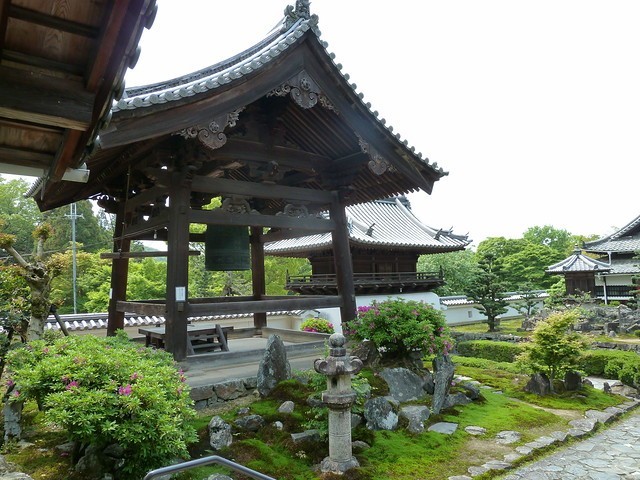
When the sea bed moves and slumps and the resulting body of water displaced, radiates out from the epicentre for thousands of kilometres. These small surface ripples in deep water become substantial waves on shallow coastal waters over-topping local coastal defences causing untold damage. The event in 2011 the resulting tsunami reached heights of 40 metres in Miyako, Tohoku province with some 20,000 casualties including destruction of the Fukushima nuclear plant. Images of such damage can be seen on japan-guide.com site.
The tectonic activity over aeons of time have resulted in the forested mountainous landscape of Japan we see today with its abundance of water and this has inspired garden designers to replicate the landscape. Hence the extensive use and importance of rocks and water and pine trees in the Japanese garden. The landscape of Japan is impressive with its high mountain lakes and raging rivers, steep sided gorges and spectacular waterfalls. So much so that 70% of the land mass is largely uninhabitable and not available for agriculture. Rice paddies and tea plantations are to be found is some rather inaccessible places.
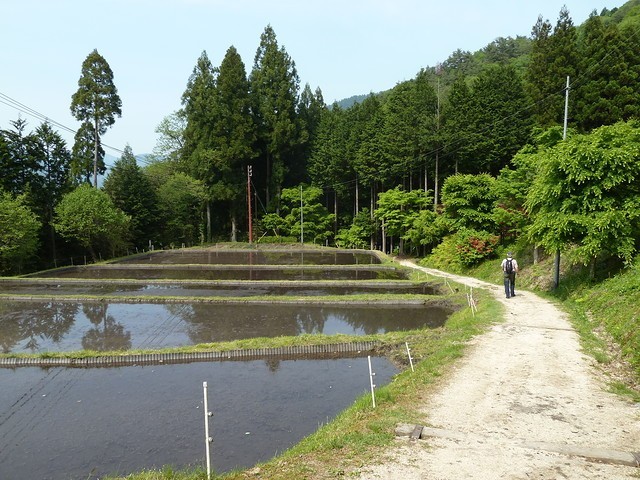
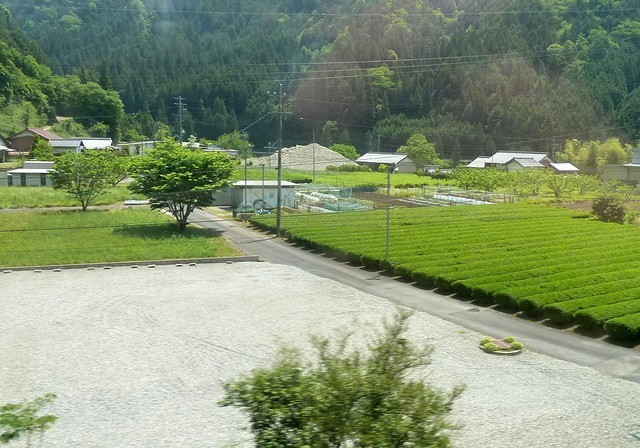
Representations of Mount Fuji are often found in the dry landscape gardens of the temples (Kurama dera temple near Kyoto, Daisen-in, Kyoto) as well as on a larger scale in some stroll gardens (Suizen-ji, Kumamoto, Ginkaku-ji, Kyoto). Other representations of Mt. Fuji occur in Rikugi-en garden in Tokyo with the hill covered in colourful azaleas with white ones at the summit, symbolising winter snow. Similar effects are to be found in the flower fields of Hokkaido and elsewhere. The white sand mountains represent purity and may be spread out on the garden to welcome important visitors.
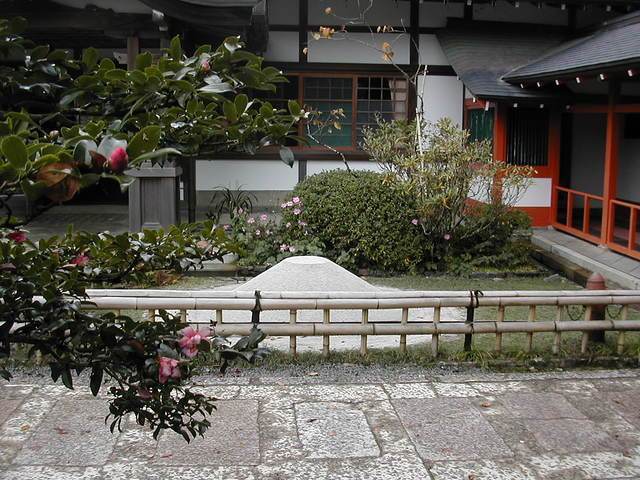
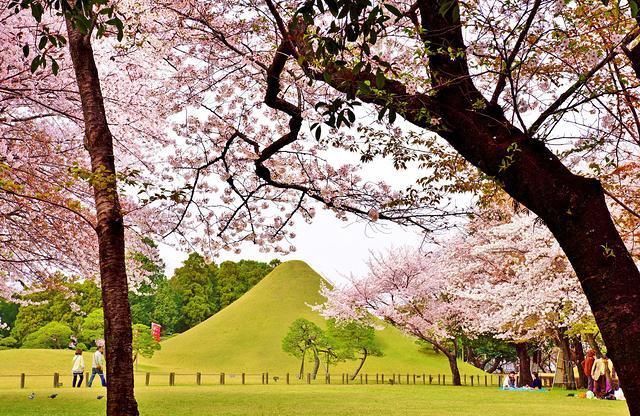
Water in the dry landscape gardens is represented by white Shirakawa gravel and is raked into patterns, symbolising still water (Ryoan-ji, Kyoto) or rough seas (Zuiho-in, Kyoto). Some are raked in intricate patterns giving a more modernistic appearance, in particular the work of Shigemori Mirei favoured this distinctive approach. Waterfalls and dry river beds and are also popular with excellent examples at the Sogenchi garden of Tenryu-ji and Daisen-in, where the design represents a story of the river of life. The dry stream bed is a particular favourite in the design of Japanese gardens in the UK (Kingston Lacy, Wimborne and numerous show gardens). Real water features in the streams and waterfalls in many stroll gardens (Kenroku-en, Kanazawa) with most naturalistic effect notably at Yuushi-en garden with its 5 metre falls, rocky gorge and wonderfully crafted streams.
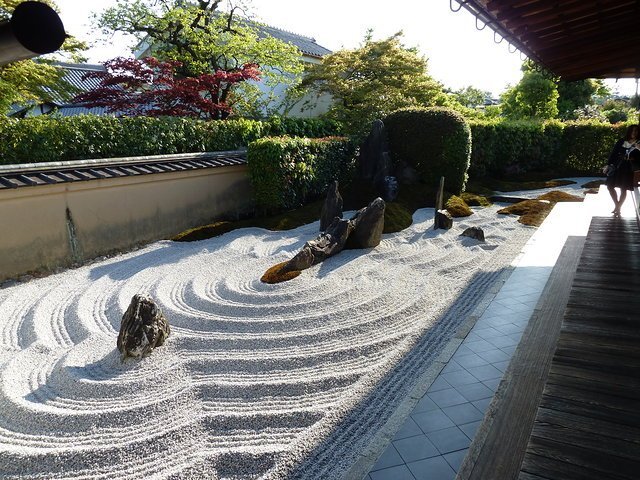
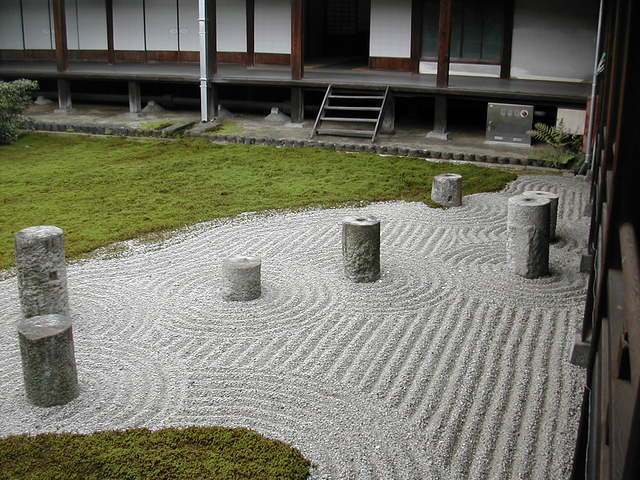
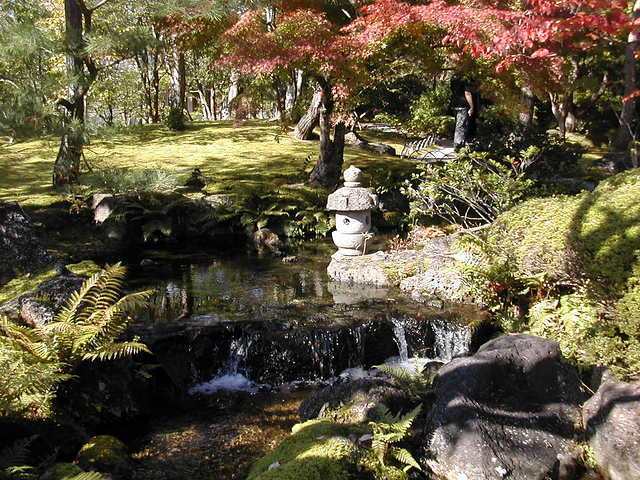
The modern stroll garden at Taizo-in temple, part of the Myoshin-ji complex built by Kinsaku Nakane in the 1960s, features weeping cherries amongst the azaleas with gushing stream and pond. There are a couple of dry landscape features near the entrance.
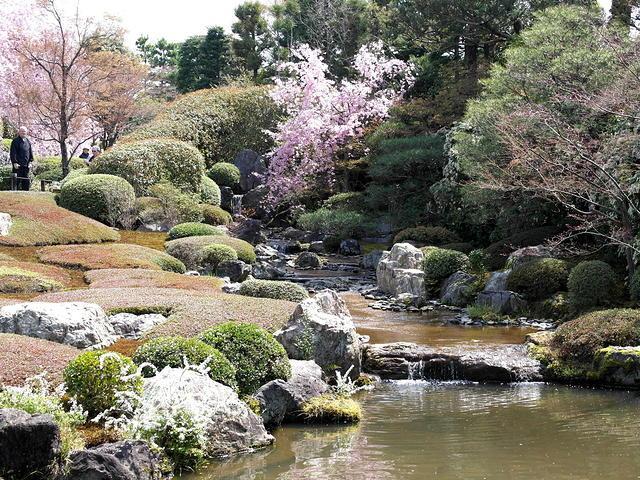
Sennyu-ji temple in Kyoto is known as the "temple of the gushing water", said to have been founded during the 13th century by the illustrious monk Junjo. The rear garden features a pond and stream with tamamono-fed azaleas under a canopy of maples providing a glorious Autumn spectacle.
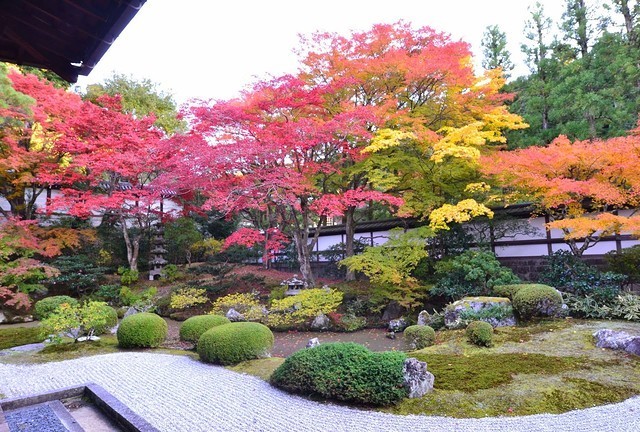
Raikyu-ji garden in Bitchu Takahashi, was designed by Kobori Enshu when he was governor of the province and incorporates Mt Atago as part of the splendid shakkei together with islands of stones representing the crane and turtle. The immaculately pruned azaleas invoke green rolling hills and deep valleys. Another garden of a similar style is that of Meigetsu-in temple in Kamakura.
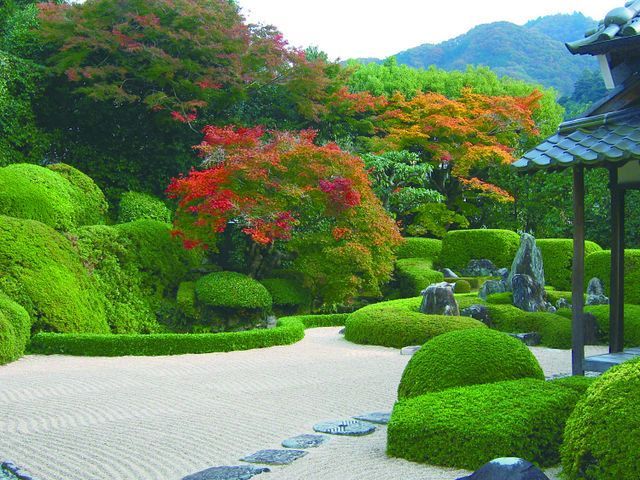
A prominent feature of the landscape is the pine tree with four main species. The red pine (Pinus densiflora) is widely distributed throughout the four main islands on poor dry soils and used in traditional gardens and bonsai. The white pine (Pinus parviflora) is mainly found in Western Japan and little used in gardens although important in bonsai. The black pine (Pinus thunbergii) is largely found in coastal regions except Hokkaido and is an important garden tree and the king of bonsai. Finally the stunted stone pine (Pinus pumila) is a tree of higher altitudes of northern Honshu and Hokkaido. In the garden pines are highly trained using bamboo poles and pruned to show the structure of the tree. Gardens on the northern coast receive much snow during the winter and the pine trees require supporting to prevent damage, they may be seen in Kenrokuen garden, Kanazawa. The Adachi Museum has a fine pine garden with old but short, immaculately maintained trees. Another garden of many fine pines is to be found nearby at Yuushi-en. The pine represents hardiness and is valued in the garden, even small gardens often have a pine, often somewhat out of proportion.
The gardens of Japan are often interpretations of the landscape and a reminder to the viewer of distant places and images skilfully interpreted. In the temple gardens they are designed to be viewed seated from a given point and invoke images of the old Chinese ink paintings.
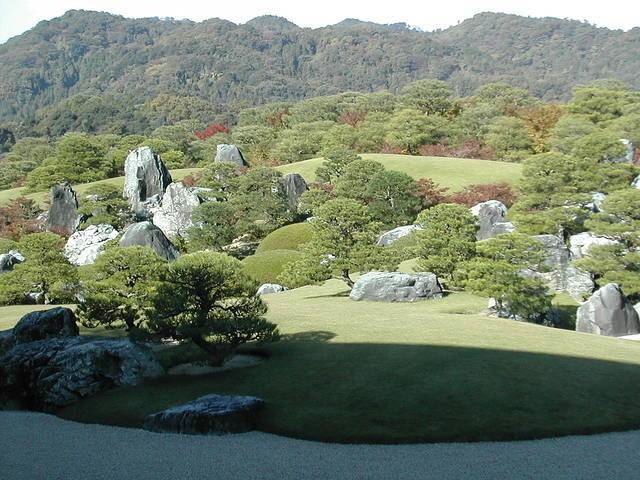
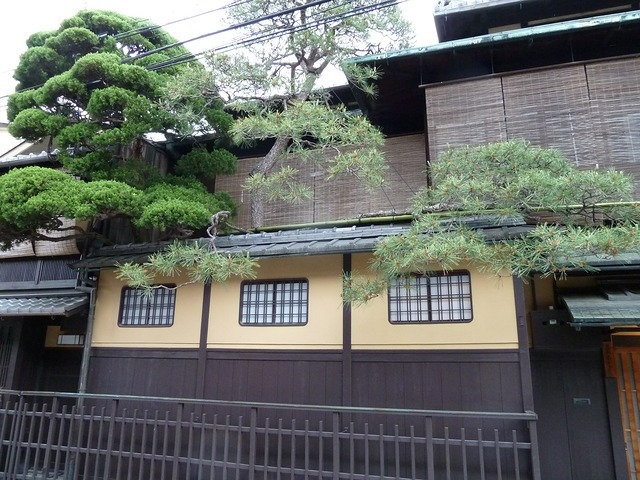
| previous post |
|
|
List of Posts:
2017/07/25 - Japan's tectonic landscape reflected in the gardens 2017/07/15 - Flora of Japan 2016/04/27 - Time in Asakusa 2016/04/25 - Kakunodate 2016/04/23 - A Thousand Cranes 2016/04/22 - Castle in the Clouds 2016/04/21 - The beauty of Koraku-en 2016/04/20 - Far from the Madding Kyoto Crowds - Part 1 2016/04/20 - Far from the Madding Kyoto Crowds - Part 2 2016/04/18 - A Day in the Mountains 2016/04/17 - Delights of Hikone 2016/04/16 - Nara Revisited 2015/01/03 - Kamakura temples and gardens 2015/01/01 - Takayama Temple Trail 2014/12/29 - Kurama - Kibune hiking trail 2014/11/10 - A visit to Himeji 2014/11/05 - Shigemori Mirei - The Rebel in the Garden 2014/11/04 - Arashiyama and nearby sights 2014/11/03 - The less visited sites of Nara 2014/11/03 - The gems of Matsue 2014/10/31 - Agon-shu Monastery 2014/10/30 - In the footsteps of the Shogun 2014/10/30 - Tale of the Genji |